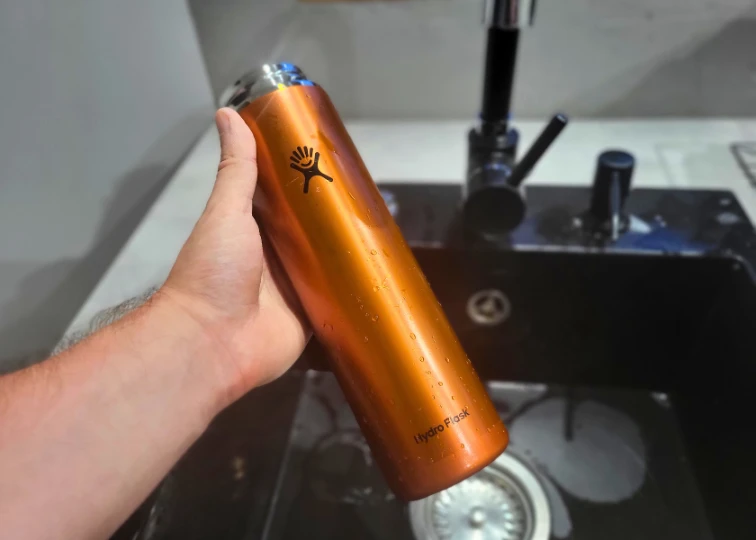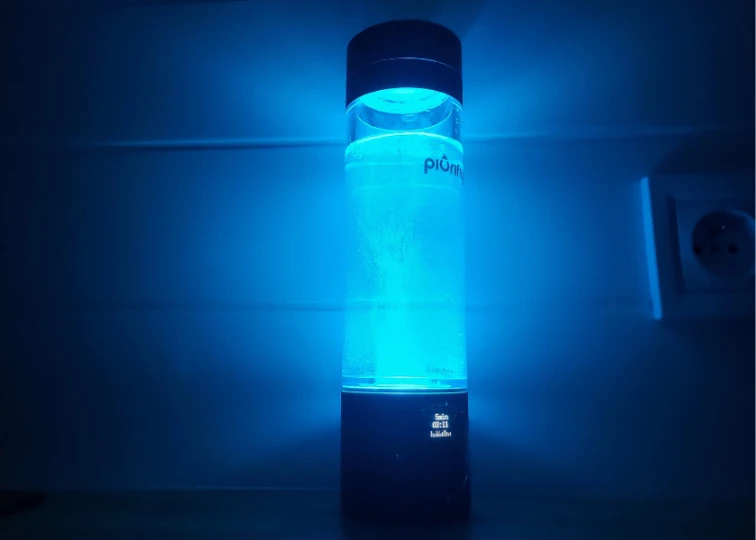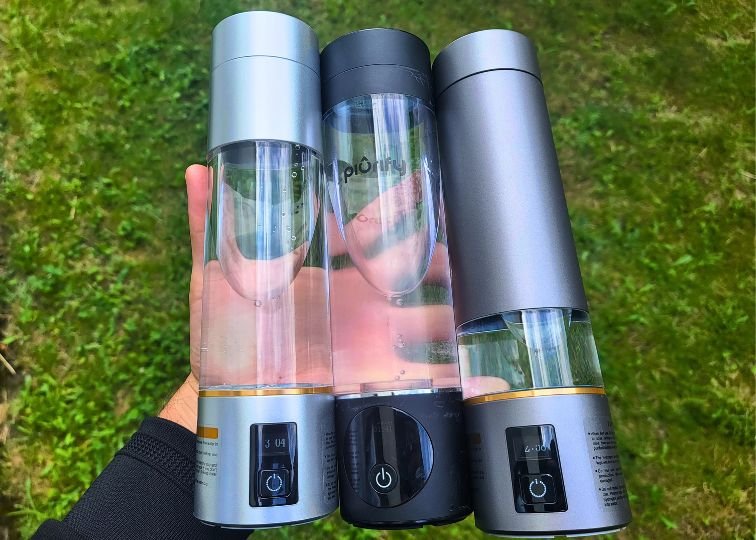When was the last time you cleaned your water bottle? Yesterday? A few days ago? Or… maybe it’s been weeks?
What if I told you that I clean my bottles every day?
It might sound excessive at first, but think about it: every time you use your bottle, it collects bacteria and germs. And yet, we just rinse and reuse, rinse and reuse, without a second thought.
But rinsing doesn’t equal cleaning. In fact, one study found that the average reusable water bottle has about 40,000 times more bacteria than a toilet seat.
I think that should be enough to convince you to start paying a little more attention to how you clean your bottle.
In this guide, I’m going to walk you through the methods and tips I personally use to make sure my bottles are not just “rinse clean” but properly clean.
This will be the last water bottle cleaning guide you’ll ever need!
Some of the links on this page are affiliate links. This means that if you click on one of the links and make a purchase, I may earn a small commission at no additional cost to you.
Method #1: Warm Water + Soap

This is the method I swear by for my daily cleaning routine. It’s quick, easy, and effective for giving my bottle a proper scrub.
The truth is, you should treat your water bottle like any other dish and clean it every day.
If your bottle has a wide mouth, a regular sponge should do the job just fine. But if you’ve got a narrow mouth or something tall like my Hydro Flask, I’d suggest getting a long brush like this one.
Once you’ve got your brush or sponge, sprinkle on some soap and give the bottle a good scrub, making sure to hit all the nooks and crannies, especially the bottle’s rim.
If you’re sensitive to the lingering soapy taste, you might want to check out my guide on how to get rid of that after-cleaning flavor.
What About the Lids, Caps, Spouts?

Cleaning the lid is just as important as the bottle itself, but I can’t imagine doing it without a small brush. It’s very useful for getting into all those threads, nooks, and crannies. It’s way more effective than trying to cram a sponge in there.
If your lid has one of those rubber or silicone gasket rings, be sure to give it some extra attention. Some brands even offer little tools to remove the gasket so you can clean under it properly.
If you don’t have that tool, just get creative and find something small around the house that can pop it off.

Remember exactly how you took the gasket off! If you put it back wrong, you might end up with leaks.
And if your bottle has a straw, don’t miss my guide on how to clean those properly. It’s a whole other world.
Method #2: Ice + Salt
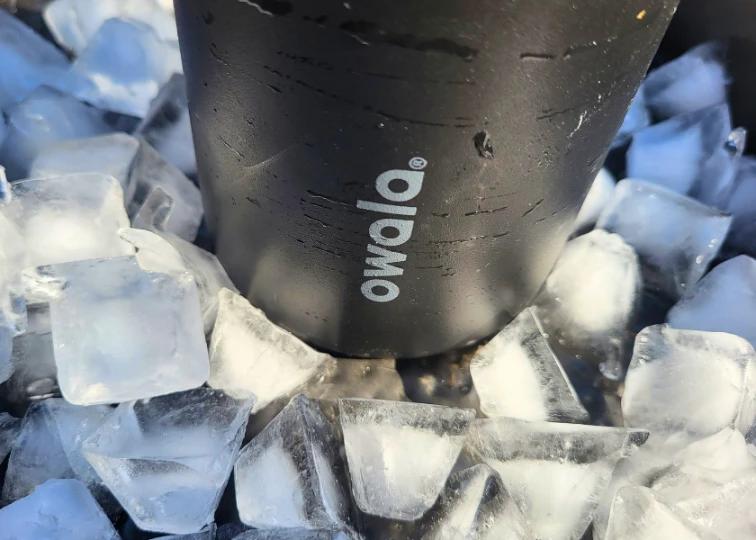
If you’re looking for an easy, no-brush solution, this method is for you. The classic ice + salt combo is simple, effective, and a little bit fun with no chemicals involved.
Here’s how it works:
- Fill your bottle with crushed ice (shards work best) and add some salt as an abrasive.
- Give the bottle a good shake, making sure to cover the spout or lid so nothing escapes.
- Once you’re done, fill the bottle with hot water to wash away the ice and salt.
If you want to take it up a notch, you can toss in a bit of soap and cold water to make a “cleaning slushy”.
The only downside of this method is that you need to prep some ice in advance and crush it into shards.
Also, keep an eye on the water content. You want the ice to stay solid for maximum cleaning power. If the ice melts too much, it’ll water down the process.
But overall, it’s a great quick fix!
Method #3: White Vinegar
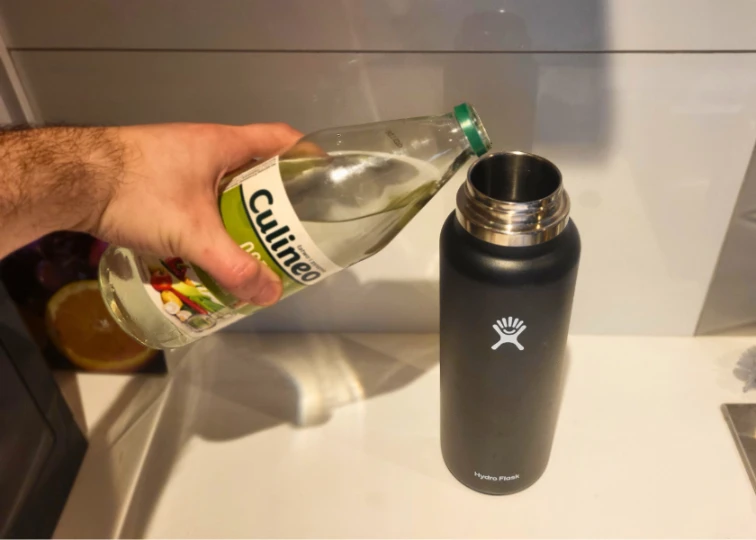
I use white vinegar for disinfecting my bottles once every 1-2 weeks as it works well for killing bacteria without a leftover taste. Usually, it’s enough for me and I don’t have to use bleach or other chemicals.
Just fill half the bottle with white vinegar and the other half with warm water.
Give it a good shake, then let it sit for at least 10–15 minutes (or even overnight if you want a very deep clean).
Vinegar naturally kills bacteria and breaks down any funky buildup.
When you’re done, dump it out, rinse well with warm water, and let it air dry completely.
And that’s it!
If you are a person who likes to experiment, I must mention not to combine white vinegar with the baking soda as it causes a fizzy, bubbling reaction that can overflow, potentially making a mess in your kitchen!
Method #4: Cleansing Tablets

I usually want to minimize chemicals in my cleaning routine as much as possible, but somtimes I do a small exception for the cleansing tablets.
Cleaning your water bottle with cleansing tablets is probably the easiest way to keep it fresh and odor-free (and no scrubbing required!).
These tablets work by fizzing up and releasing oxygen-based cleaners that break down stains, bacteria, and any funky smells inside your bottle.
How to Use Them:
- Fill your bottle with warm water (not boiling, unless the tablet says it’s okay).
- Drop in a cleansing tablet and watch it fizz—it’s doing all the work for you!
- Let it sit for about 15–30 minutes (check the instructions on your specific tablet).
- Dump it out & rinse thoroughly with clean water.
- Let it air dry completely before using it again.
That’s it! No weird aftertaste and no scrubbing. However, you must be ready for the cost which is around $10-$15 for about 20 tablets.
What Happens If I Don’t Wash My Water Bottle?
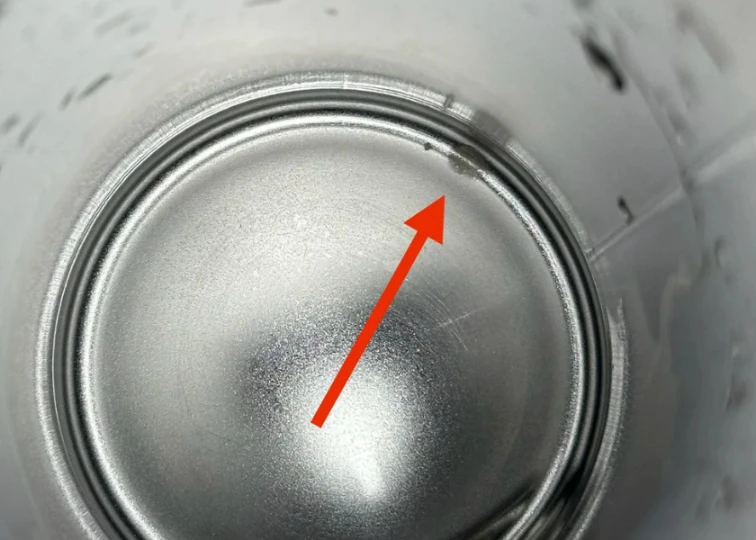
If you don’t wash your water bottle regularly, it basically turns into a bacteria playground. Over time, germs, mold, and even biofilm (a slimy layer of bacteria) can start growing inside, especially if you leave it damp or drink from it daily without cleaning.
You might notice weird smells, funky tastes, or even cloudy buildup in the bottle. And if you keep drinking from it? Well, you’re basically sipping on a science experiment, which could lead to stomach issues or just a generally nasty experience.
Can Salt Clean a Water Bottle?
Yes, salt can actually clean a water bottle and it’s a pretty handy trick if you’re trying to avoid soap residue or weird aftertastes.
Salt works as a natural abrasive to scrub away grime and stains, and it also has mild antibacterial properties.
The best idea is to add a couple of teaspoons of salt and a handful of ice to your bottle, then shake it like crazy. The ice helps scrub the inside while the salt breaks down buildup.
Final Thoughts
No matter what your water bottle is made of (stainless steel, glass, plastic, or something else) it’s crucial to give it a good wash at the end of each day.
I’m talking about actually emptying it and scrubbing it down, not just a quick rinse. If you take care of your bottle, it’ll take care of you for years to come!

Jeremiah Kowalski
Hey there! I’m Jeremiah, the guy behind WaterBottleAdvisor.com. I used to have a bad habit of guzzling sodas while working remotely, but thanks to reusable water bottles, I’ve turned my hydration game around. After testing over 50 bottles, I’m here to help you find the perfect one to make staying hydrated a joy, not a chore. When I’m not reviewing bottles, you’ll likely find me scaling steep trails around the world, trusty water bottle in hand.

